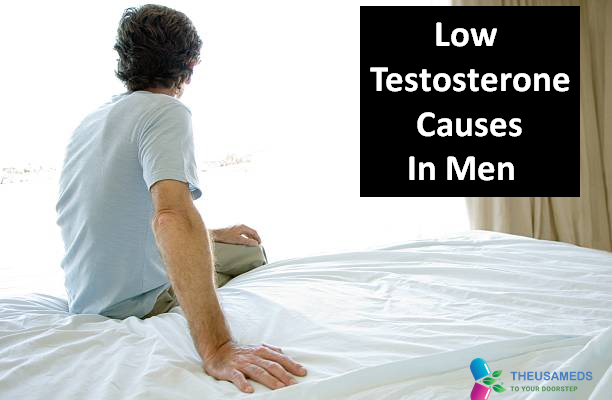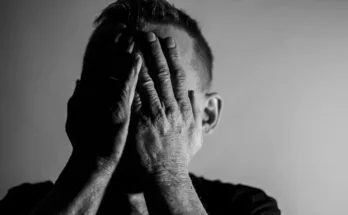If you’re a man suffering from low testosterone, you may be wondering if you should seek treatment. The good news is that there are several treatments available for men with low T. In this article, we’ll talk about the symptoms of low testosterone, treatment options, and genetic predispositions. Also, find out how you can determine if you have it.
Symptoms of low testosterone
Men suffering from low testosterone can experience symptoms like mood swings, reduced energy and sleep problems. They may also experience hot flashes. It can cause sexual issues like erectile dysfunction and a lack of sex drive. For curing erection Cenforce 100 USA is the best one. Some men also experience loss of body hair. It is difficult to tell when it is causing these symptoms, so it’s important to talk to your health care provider about them.
A doctor can rule out other underlying conditions before prescribing treatment. For example, symptoms of it in men can also be caused by a thyroid problem, high blood pressure, and aging. However, there are also medical treatments that can help men improve their energy levels. For these men, hormone replacement therapy may be an option.
Males who have low testosterone may also notice a decline in muscle mass. It is a necessary hormone for building muscle and maintaining bone mass, but when it drops, this can negatively affect strength and function. Some males may also experience gynecomastia, which is an imbalance between testosterone and estrogen. Other symptoms of it in men include reduced sex drive, fatigue, and moodiness.
Causes of Low testosterone
There are a number of causes of hypogonadism, including genetic defects, aging, and obesity. Some conditions result in temporary hypogonadism, and a person may eventually recover to a normal level of androgen. Hypogonadism can be transient or permanent, and the symptoms vary depending on the stage of development.
Another symptom of low testosterone in men is a decrease in the amount of semen produced. Testosterone is essential in the production of semen. When levels of this hormone are too low, semen production decreases. In some cases, this decrease can lead to a decrease in the volume of semen.
If your symptoms are persistent, you may need to seek medical help to determine what’s wrong. Your healthcare provider will perform a physical exam and discuss the possible causes and treatment options. A simple blood test can detect abnormal levels of testosterone. If the levels are abnormal, a doctor may prescribe testosterone replacement therapy (TRT). In most cases, treatment can be effective within four to six weeks. You can also increase testosterone naturally through diet and exercise.
Low testosterone is a common problem that affects up to 40% of men over the age of 45. It can affect bone strength, sex drive, and physical appearance. It can also be caused by certain health conditions or medicines. Age and body mass index can also contribute to low testosterone. The American Urology Association defines this as levels below 300 nanograms per deciliter of blood. Some other factors that affect testosterone levels include injury and obesity.
Men with this problem may have symptoms that are not immediately apparent. For example, they may have decreased libido and experience mood swings. A healthcare provider will test these symptoms and create a treatment plan.
Treatment options
There are various treatment options available for men suffering from low testosterone levels. In some cases, treatment options may include prescription medications or lifestyle changes. Treatments for low testosterone are based on the clinical practice guidelines of the Endocrine Society. In cases where symptoms persist, treatment may involve a combination of lifestyle changes and hormone replacement.
Your healthcare provider may perform a simple blood test to detect low testosterone levels. He or she may also examine your hair, muscle growth, and the size of your testicles. He or she may also test your testosterone levels during routine checkups, particularly if you have a history of diabetes and HIV. However, it is important to know that some men may not require treatment.
Treatments for low testosterone may include testosterone replacement therapy or a diet. Although testosterone replacement therapy is the first line of treatment for low testosterone, it may not be appropriate for all patients. For some patients, the first line of therapy is lifestyle changes and addressing the underlying cause of the problem. Treatments may also include medications to address the symptoms of it and surgeries to repair the pituitary gland.
Some men may be more likely to develop it if they smoke, drink alcohol, or use drugs. Despite its potential side effects, it can be managed effectively. For example, testosterone replacement therapy may be appropriate if you’re suffering from symptoms of an underlying condition, such as testicular atrophy.
While some men don’t need testosterone replacement therapy, a prolonged period of untreated low testosterone can lead to serious medical complications. In rare cases, men with low testosterone may have erectile dysfunction and heart disease. If left untreated, these problems may worsen, or lead to infertility. In addition, men suffering from low testosterone may experience decreased energy and sleepiness.
Diet for male
A diet rich in vitamin D and zinc can help to balance hormone levels. Men should consume 11 milligrams of zinc per day, which can be found in meat and shellfish. Vitamin D can be found in eggs and milk. Diets rich in omega-3 fatty acids and antioxidant vitamins may also improve testosterone levels. However, the best treatment options for low testosterone in men will likely be a combination of lifestyle changes and medications.
It can cause a number of symptoms, including mood swings, erectile dysfunction, and lack of concentration. Men may feel tired or unfocused for weeks on end. If these symptoms persist, the first step is to consult with your health care provider. These symptoms could be caused by a variety of conditions. If your doctor believes you are suffering from it, the next step is to seek treatment.
Treatment for it in men and symptoms can include lifestyle changes or hormone replacement. This treatment can help improve mood, muscle mass, and bone density. However, it is not a cure.
Genetic predisposition to low testosterone
There are several factors that can increase the likelihood of having low testosterone levels. These include age, lifestyle, and genetics. Genetic predisposition to it in men has multiple genetic markers, most of which are located within the globulin gene, which binds to testosterone. If a male has an increased amount of this gene, the level of testosterone in his blood will be decreased.
It is a genetic condition caused by an error in the development of the testes. Men with this condition usually have an enlarged breast, reduced body hair, and lower body masses. They are often unaware of the low levels of testosterone until they are tested for the condition. In these men, sperm count is usually low, but sexual function is normal.
Researchers
Researchers from a number of countries have identified two risk alleles associated with low serum testosterone in men. The two risk alleles were found to be linked to two genes, SHBG and FAM9. The researchers used the SHBG locus to make their findings more robust.
Low testosterone in men is a condition that can be treated by the doctor. He will perform a physical examination and ask about your medical history. He will also check for any lumps in your body. Blood tests may also be performed. In some cases, diagnostic tests such as MRIs and X-rays may be necessary. In some cases, DNA testing is also performed if a genetic cause is suspected.
Although low testosterone is most common in older men, it can also occur in younger men. The causes of it are many, but they are treatable. Some of these causes are stress, chronic disease, pituitary problems, and medications. Symptoms of it can range from low libido to erectile dysfunction. Symptoms can also include decreased mental acuity and moodiness.
It is a serious condition affecting males. Fortunately, advances in treatment can help men regain normal hormone levels. Yet, there are still many unanswered questions associated with the cause of low testosterone. For example, is genetic predisposition involved in the onset of low testosterone?
Despite its obvious genetic implications, the symptoms of low testosterone are often not immediately noticeable. In fact, hypogonadism is often the result of aging, with the testis losing its capacity to produce adequate levels of T. In older men, the symptoms may include decreased libido and lowered testicular volume. The symptoms of hypogonadism may be difficult to identify, especially among young men.
Read at Jockeyfrog.com




